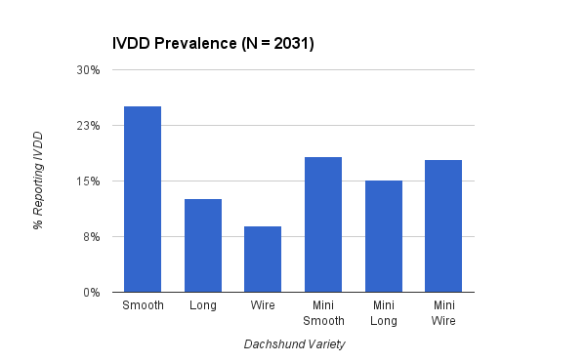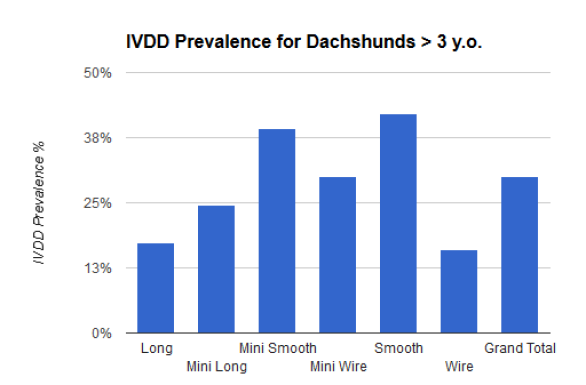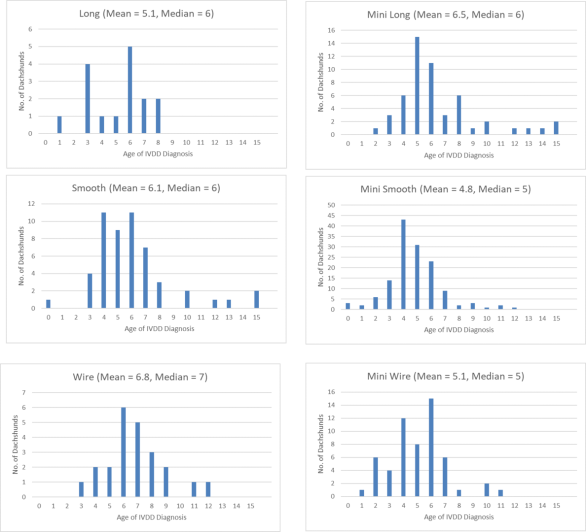
How common is IVDD?
In order to find out about IVDD in UK Dachshunds, the Dachshund Breed Council has carried out health surveys involving over 16000 dogs. We can use the results to identify how common (prevalent) back disease is in our breed. Our results are consistent with peer-reviewed research carried out around the world.
The data shows that, typically, 1 in 4 Dachshunds will suffer some degree of back disease during their lifetime. This figure is about 10-12 times higher than would be expected in the general population of dogs.
In total, 342 (17%) Dachshunds from our 2015 survey were reported as having had some degree of back problem. 104 of those went on to have repeat incidents. The proportion reporting IVDD varied depending on the variety (coat and size). Smooths had the highest (25%) reported prevalence and Wires the lowest (9%). There was no difference in IVDD prevalence between dogs and bitches.
Our 2018 survey is reported here and the 2021 survey here.
There are more references to published prevalence data on our Research page.
The charts below are from our 2015 survey.
However, it is important to note that IVDD is a particular risk between the ages of 4 and 7, so these figures need to be adjusted to show prevalence by age.
Although there were a few cases in very young dogs, the majority of cases of IVDD began to be reported in Dachshunds over 4 years old.
Across the whole survey population, 83% of the dogs had not experienced IVDD, but 40% of the dogs aged between 5 and 14 had suffered some degree of IVDD. 76% of the dogs that suffered some degree of IVDD had this diagnosed between the ages of 4 and 8.
The charts below show age of IVDD diagnosis for each of the 6 Dachshund varieties (from our 2015 survey: Smooth 52 dogs, Mini Smooth 140, Long 16, Mini Long 53, Wire 23, Mini Wire 56).
Which discs are most at risk?




